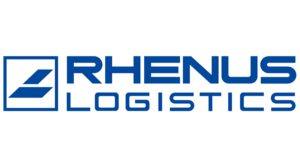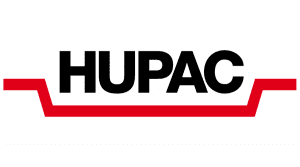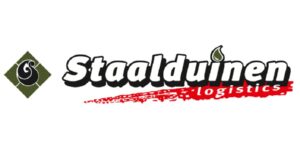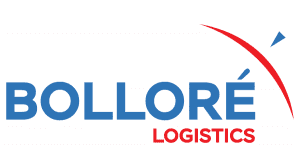Significant funding and development efforts are being directed towards rail, intermodal transport, and electric vehicle (EV) infrastructure, reflecting a clear move away from traditional road transport. The modal shift is also evident from recent investments aimed at enhancing infrastructure and promoting sustainable transport options. These investments underscore the commitment to reducing environmental impact, improving efficiency, and fostering a more sustainable logistics network. Intermodal transport can play a crucial role in meeting the goals of net-zero emissions by 2050 through the reduction of road transport emissions, improvement of efficiency, adoption of green technologies, enhanced intermodal facilities, and data-driven decision-making.
While providing infrastructure is primarily a (supra)national responsibility, commercial companies handle the efficient operation of this infrastructure. These operations involve complexities such as load management, cross-docking, full and less-than-full truck or container loads, first and last-mile planning, and route optimization. Our industry-specific solutions deliver end-to-end visibility across various transport modes, customized to align with your business goals.
Challenges in Landside Logistics
Across the world, initiatives are being undertaken to improve infrastructure for landside logistics, covering road, rail, and intermodal transport. In Europe, the Trans-European Transport Network (TEN-T) is a prime example, with primary goals to facilitate efficient and sustainable transport of goods and people, enhance economic and social cohesion, and promote environmentally friendly modes of transport. While no directly comparable initiative exists elsewhere, similar efforts with comparable objectives can be found in the US, such as the National Freight Strategic Plan (NFSP), which aims to promote environmentally sustainable practices in freight transportation, and the Infrastructure Investment and Jobs Act (IIJA), which aims to increase investments in electric vehicle infrastructure and other green transportation initiatives. In Asia, a similar trend is evident with numerous international projects, such as the implementation of the Trans-Asian Railway Network.
With the rise of the different modalities in land side transportation, comes the additional challenge of connecting the modalities. While it is rather easy to drive a truck from Stockholm to an end customer in Madrid, it becomes more complex when the leg between Hamburg and Madrid is done by rail. While infrastructure and regulatory compatibility is being taken up by governments, the coordination efforts in scheduling, system integration and operational complexities are left up to the market. Being a leader in this domain now means a competitive advantage in the future.
While sustainability plays a pivotal role for governments in selecting investments for essential components of the infrastructure required for a comprehensive inland network in the future, companies can promptly reap the benefits from the sections of the network that are currently being completed. With an appropriate planning solution, companies can seamlessly plan intermodal transport as they would road transport, ensuring adherence to promised delivery schedules and reducing expenses. Since fuel stands as a significant variable cost in transportation, the modal shift often proves advantageous to a company’s financial performance. In addition to the challenge of connecting different modalities in intermodal terminals, landside logistics encounters other obstacles for which a data-driven solution yields direct advantages:
- Traffic Congestion: Heavy traffic in urban zones and transport hubs can lead to considerable delays and unpredictability in delivery schedules. Such congestion may also escalate fuel usage and emissions.
- Labor Shortages: A deficit in skilled personnel, particularly in the realms of truck driving and warehouse staffing, can cause delays and escalate expenses for landside logistics endeavors.
- Last-Mile Delivery: Transporting goods to their ultimate destination, particularly within urban locales, poses challenges due to restricted access, parking limitations, and the necessity for accurate and punctual deliveries.
- Regulatory Compliance: Complying with intricate and constantly evolving transportation regulations, encompassing safety protocols, environmental mandates, and customs procedures, presents a challenge for logistics operators.
- Supply Chain Visibility: Limited real-time visibility into the entire supply chain can lead to inefficiencies, making it difficult to anticipate and respond to disruptions promptly.
- Weather and Natural Disasters: Unpredictable weather conditions and natural disasters can disrupt landside logistics, causing delays, damage to goods, and safety concerns for personnel.
- Technology Integration: The adoption and integration of advanced technologies such as GPS tracking, RFID, and data analytics can be challenging for some logistics providers, impacting their ability to optimize operations.
Effectively tackling these obstacles demands a comprehensive strategy entailing collaboration among stakeholders, harnessing technology, and adjusting to changing regulatory and environmental norms.
Let Ab Ovo assist you in crafting sustainable IT solutions for your challenges, encompassing planning, digitization, scenario analysis, and logistics insights. We will aid you in unraveling these complexities and ensuring informed decision-making balancing sustainability, efficiency, and customer satisfaction.
Logistics Solutions Made for You
We enable you to optimize your supply chain in the dynamic world of complex (intermodal) planning puzzles. Our solutions provide the answer to many of your challenges such as the need for an optimal route, load/unload planning or optimizing outbound planning.
We have developed solutions supporting you with special requirements in the supply chain – which are not covered by traditional optimization tools. With our industry knowledge and best practices, we ensure business value by reducing costs, increasing profit margins, and reducing carbon emissions. We dare to say that we stimulate growth and sustainability with our strong predictive and prescriptive analytics capabilities. Our solutions include:
- Route Planning Optimization
- Last Mile optimization
- Driver planning
- Load Planning
- Container repositioning
- Cross-docking
- Distribution Network Planning
- Advanced Analytics
- Transport Margin Dashboard
- Operations ERP
Our Solutions – Your Benefits
At the outset of every project, we establish a strategy focused on delivering value to our customers. In the retail sector, this strategy encompasses:
- Reducing carbon emissions: By implementing optimal route planning and load consolidation, unnecessary miles traveled and emissions are minimized, thereby contributing to environmental sustainability efforts.
- Increasing workforce utilization: Enhance labor resource optimization for improved efficiency.
- Decreasing transport costs: Optimize routes and transportation modes to lower expenses.
- Improving delivery time of products: Streamline processes to expedite shipments.
- Reducing delivery costs: Minimize delays and errors to reduce overall expenses.
- Optimizing asset utilization: Efficient planning maximizes the utilization of transportation assets such as trucks and warehouses, reducing idle time and enhancing overall asset productivity.
- Improving planning quality, transparency, and reliability: Enhance accuracy and communication to bolster logistics planning quality, transparency, and reliability.
Resources











